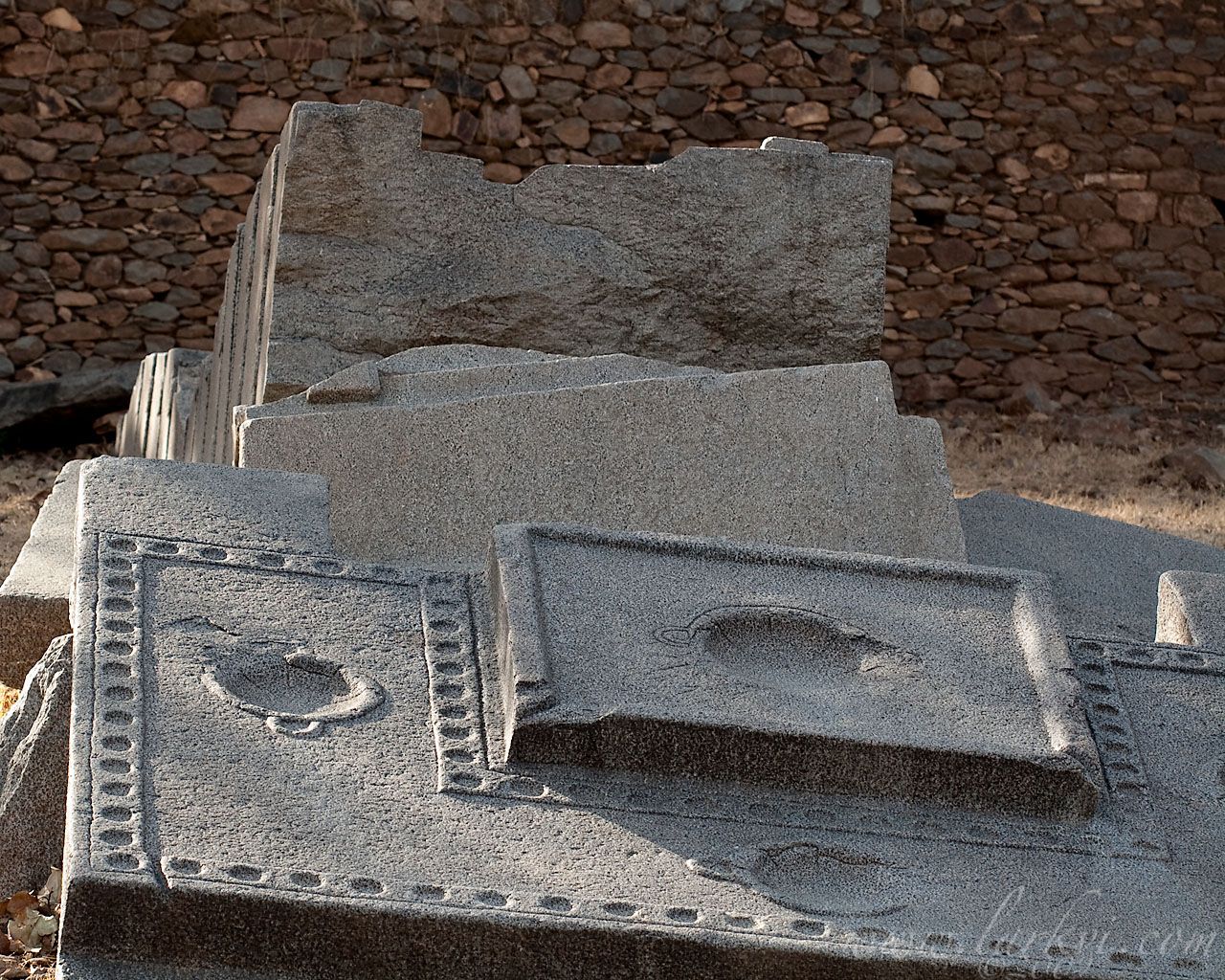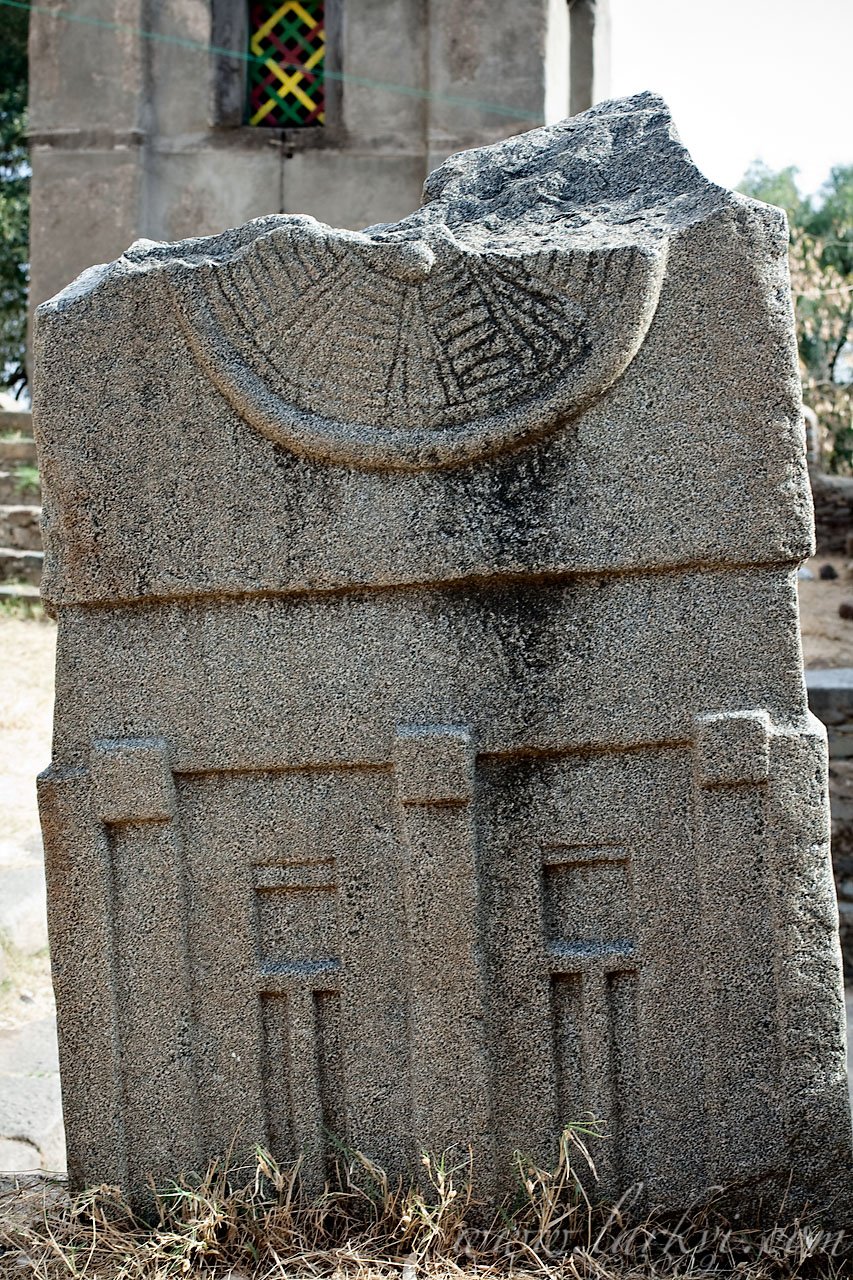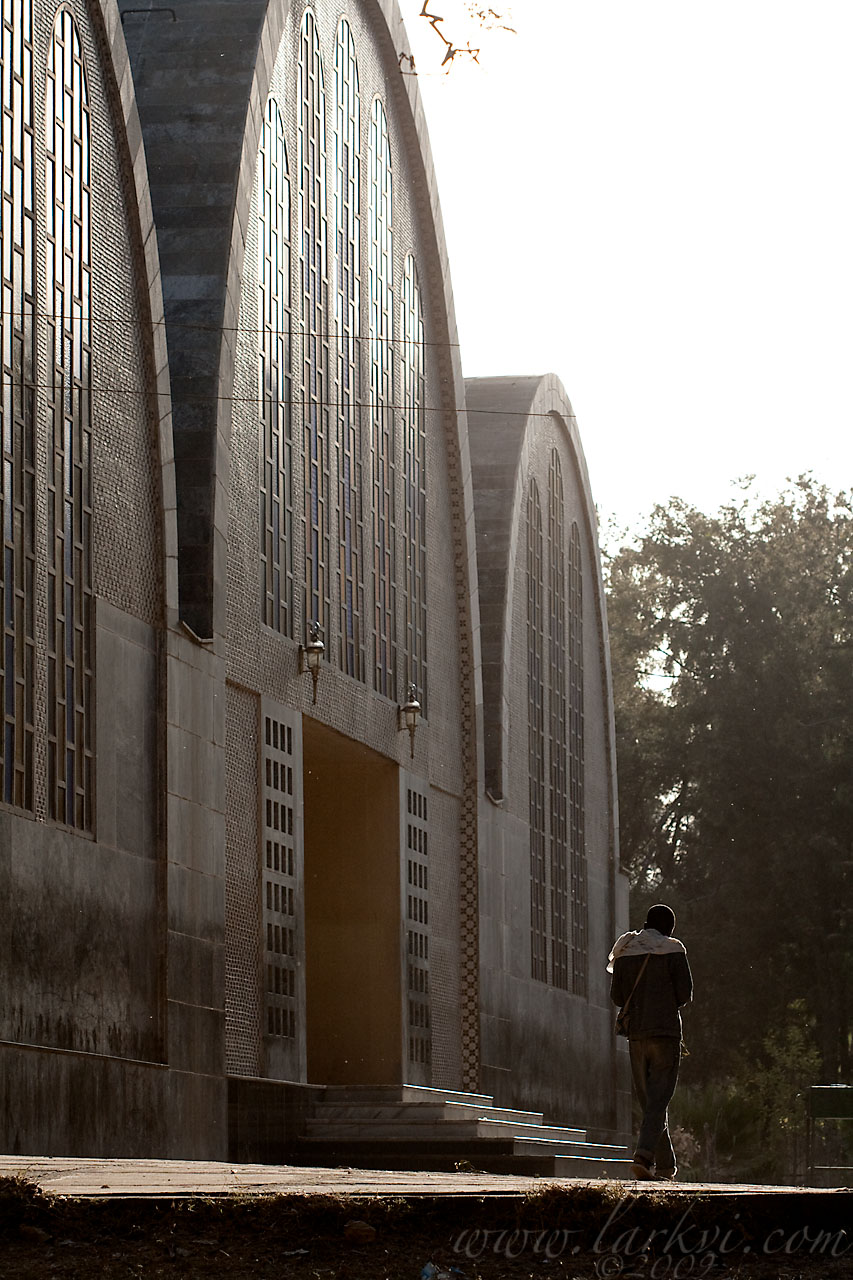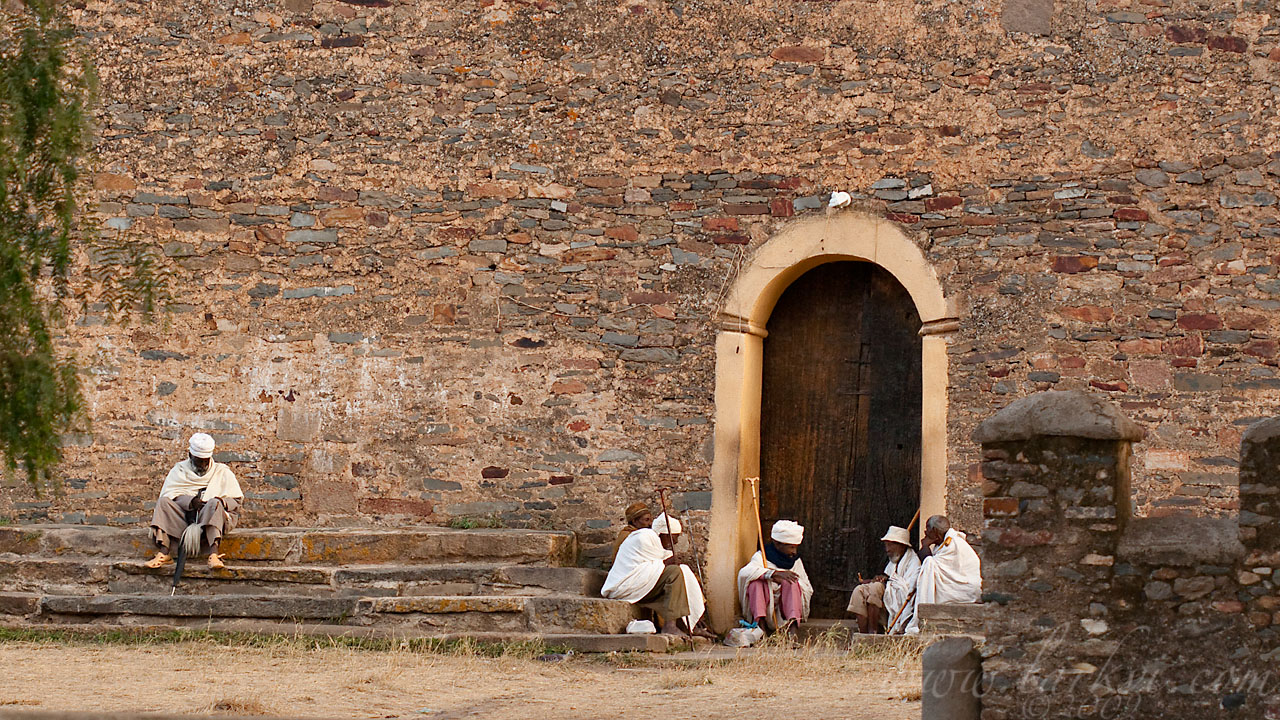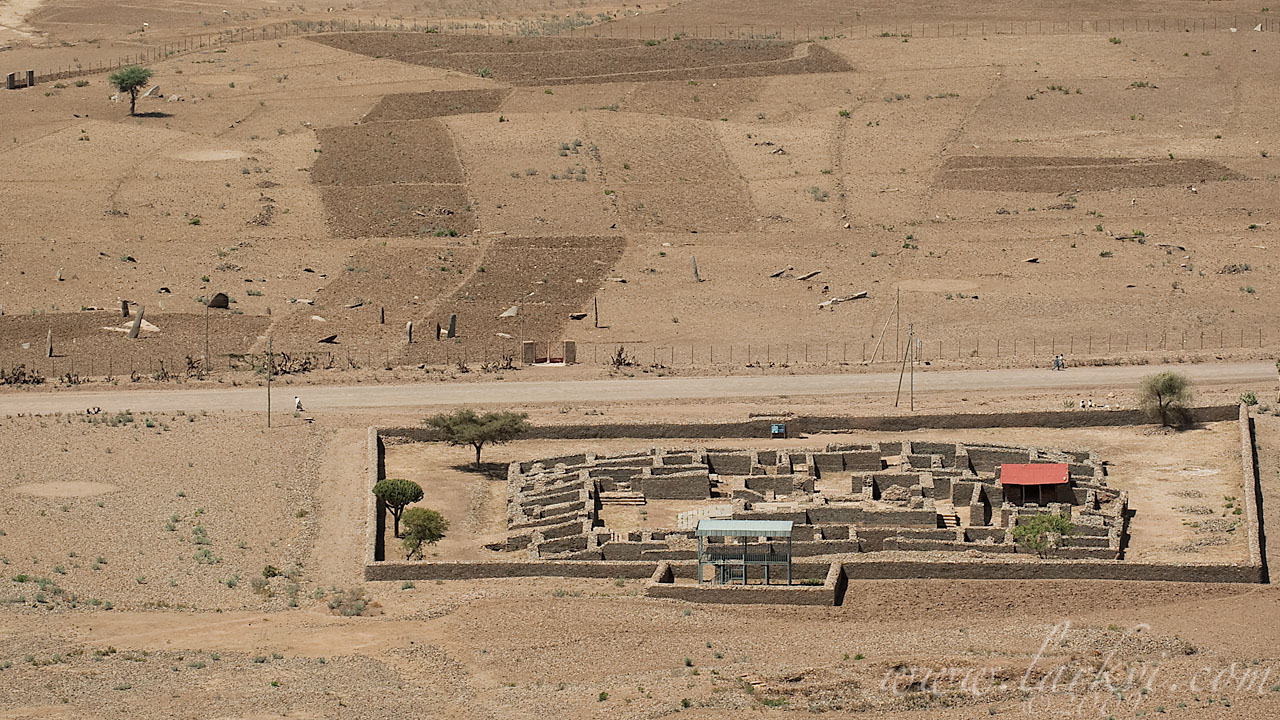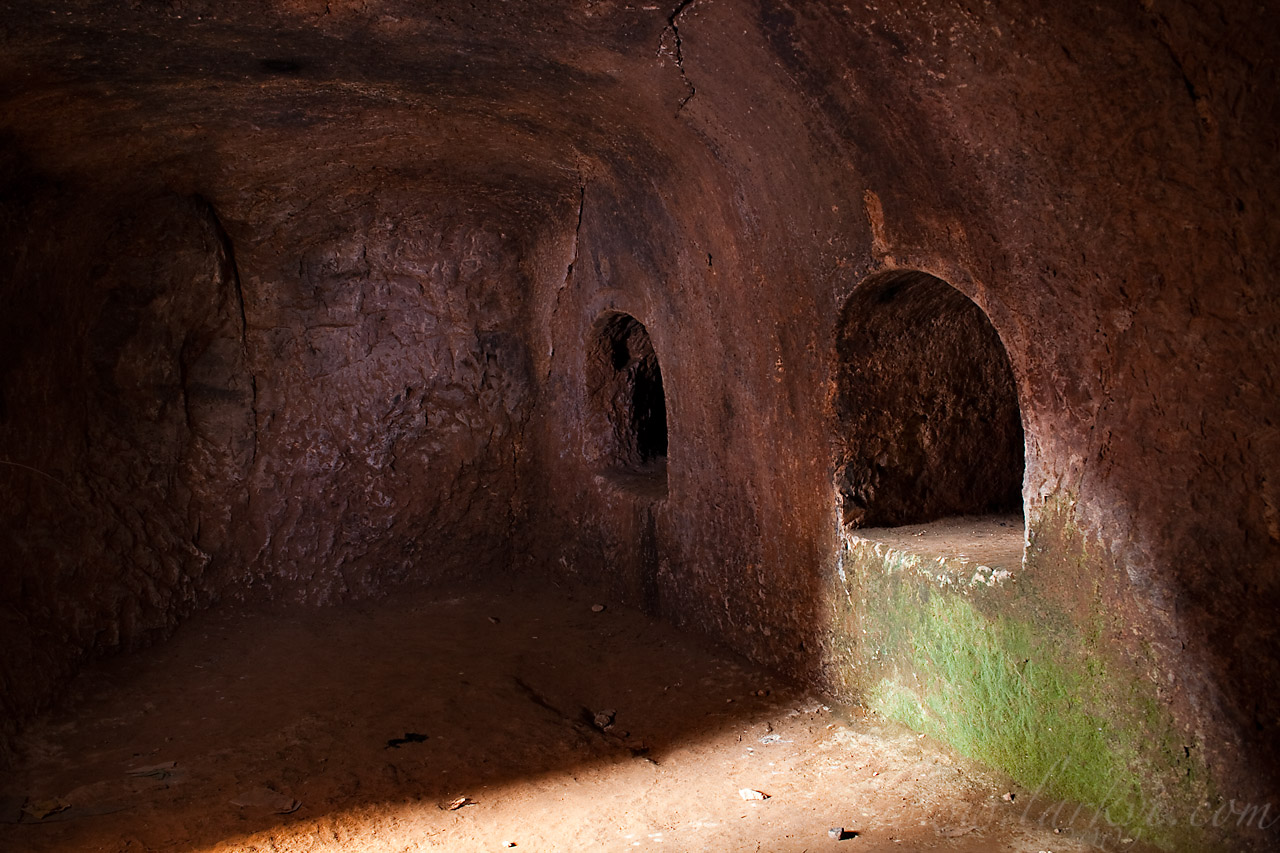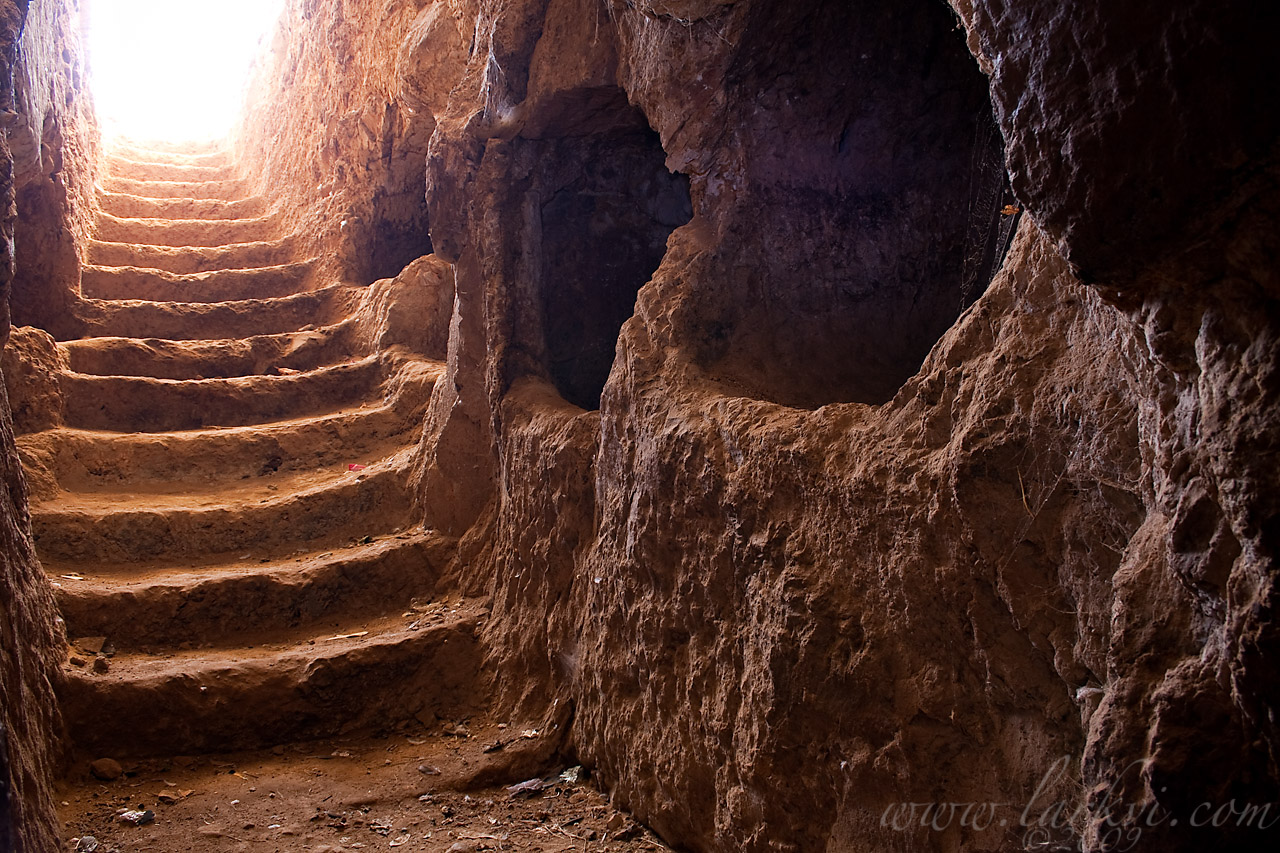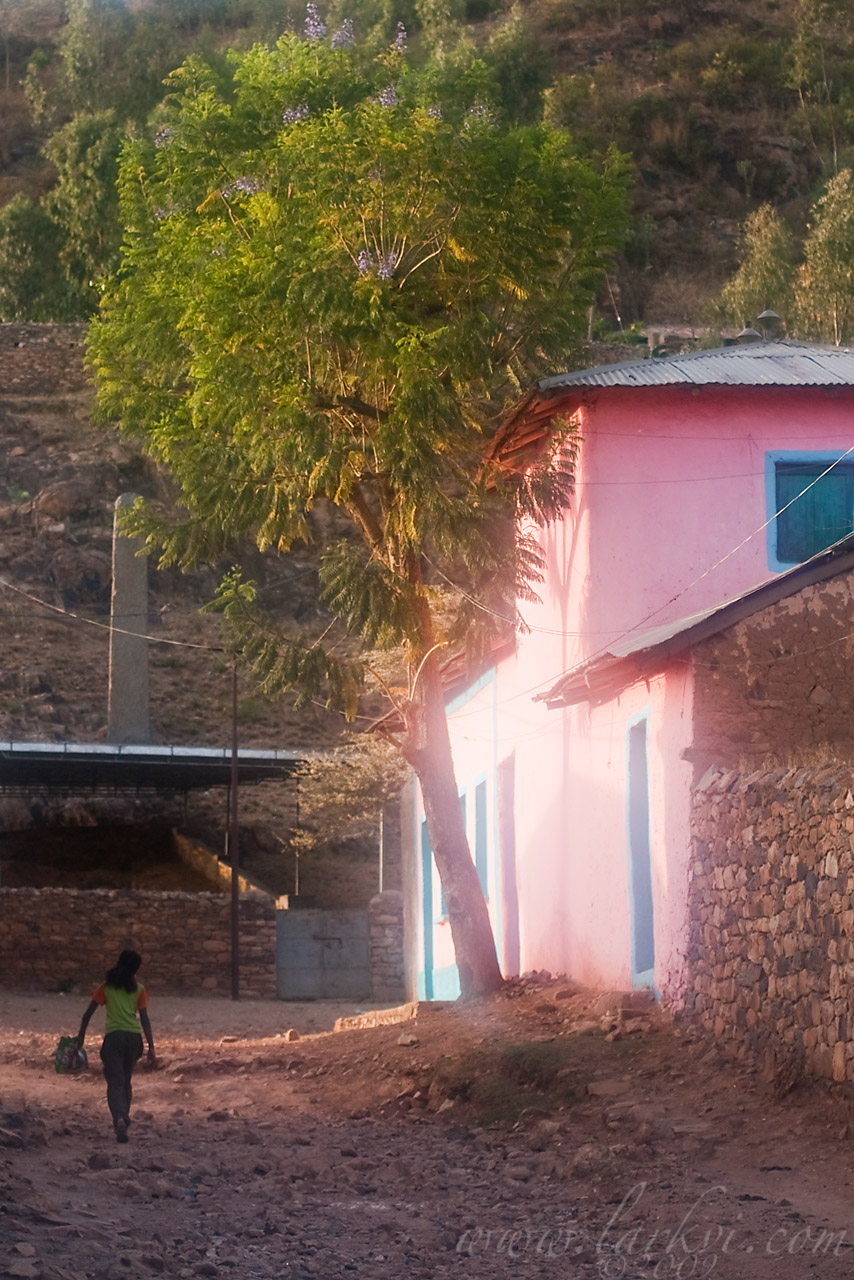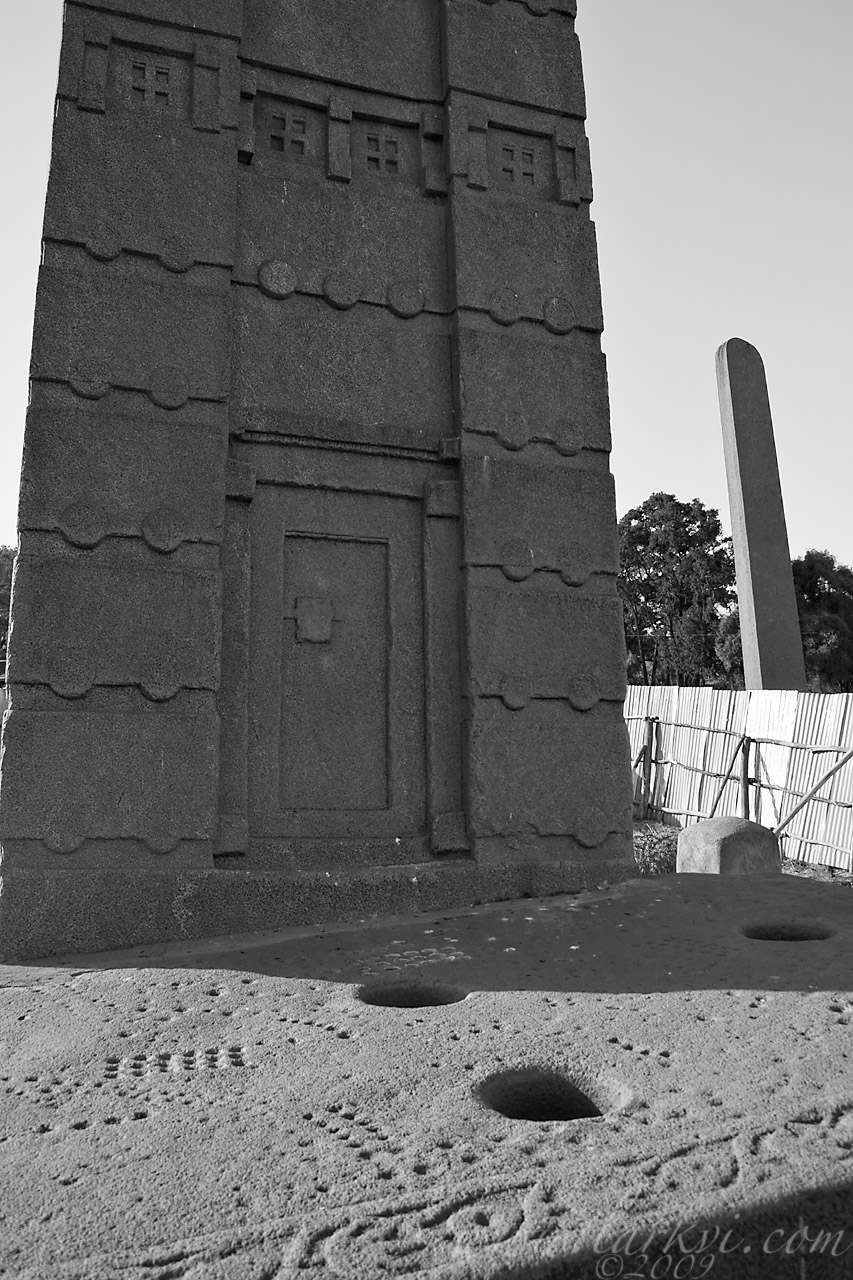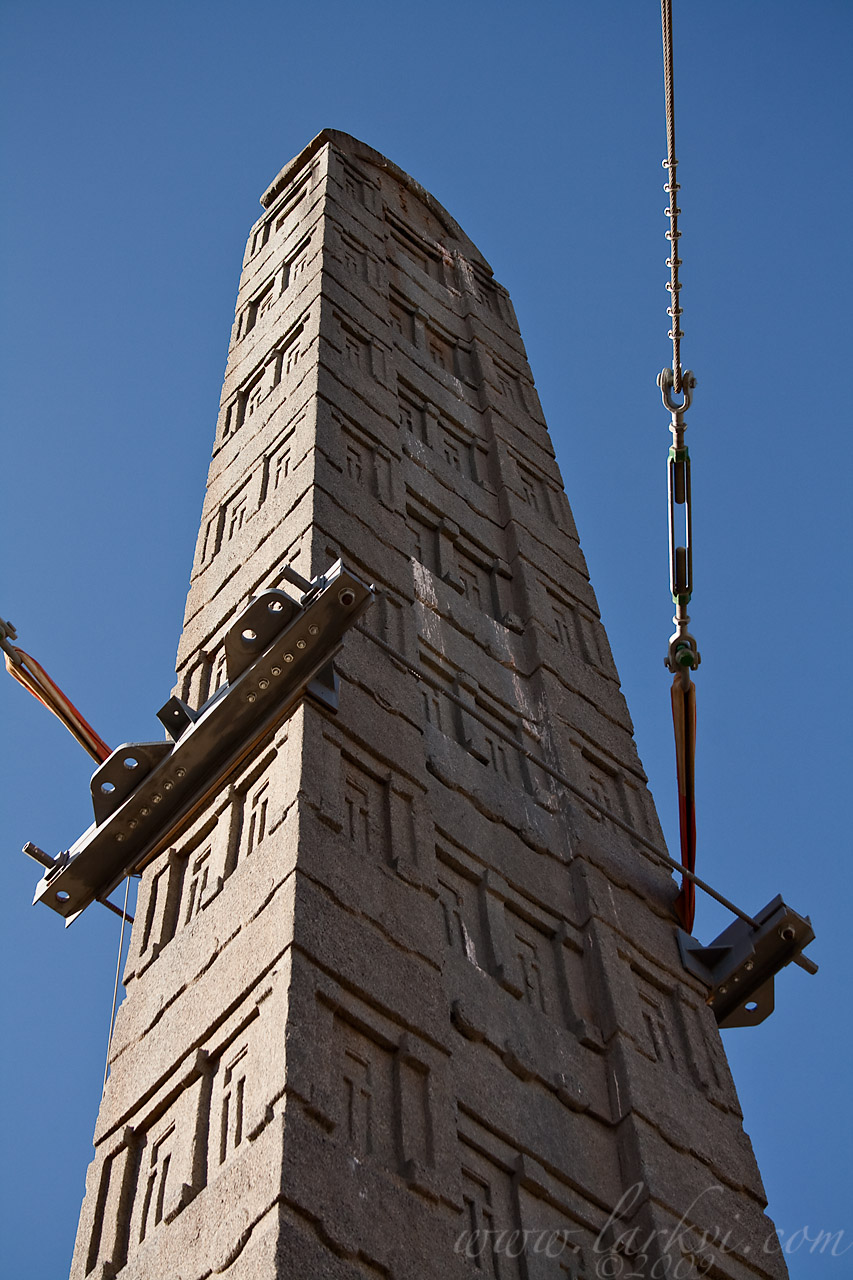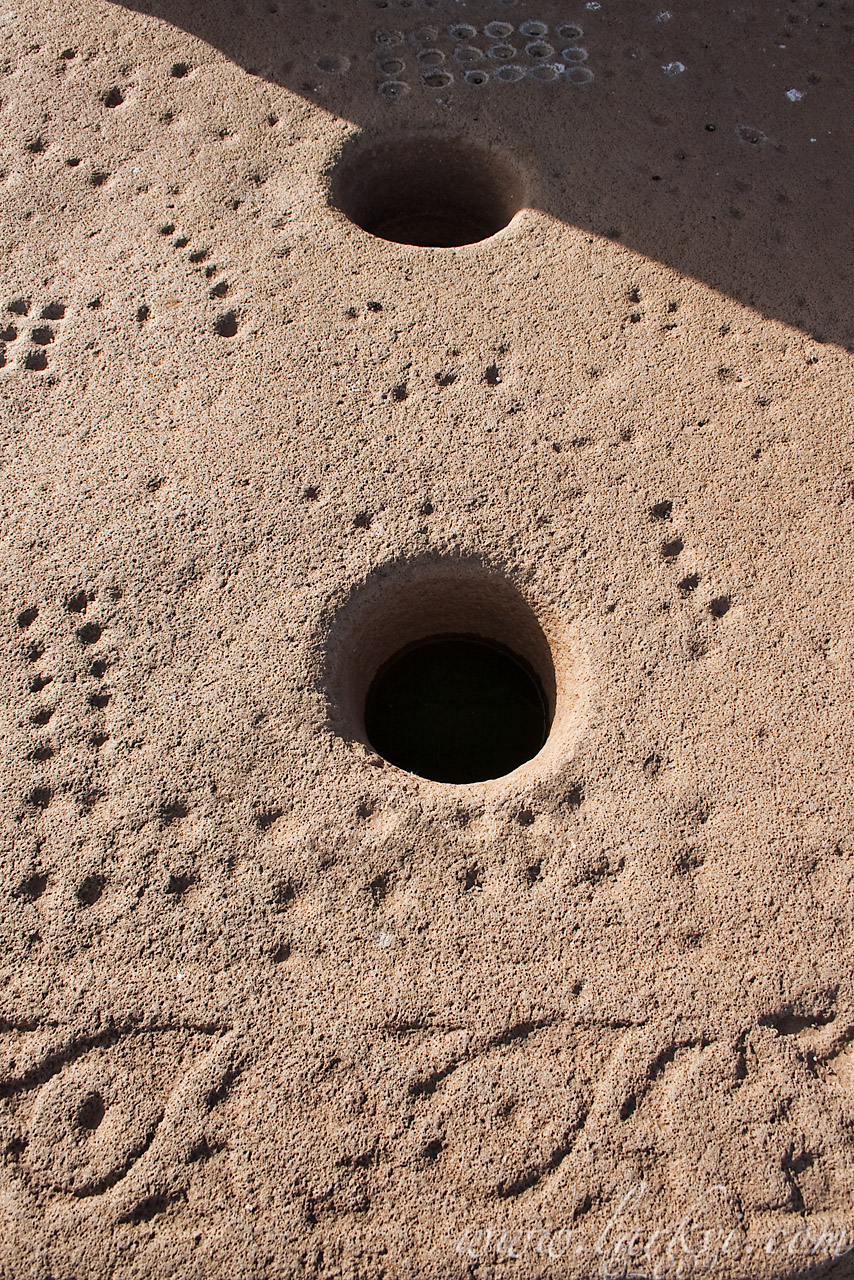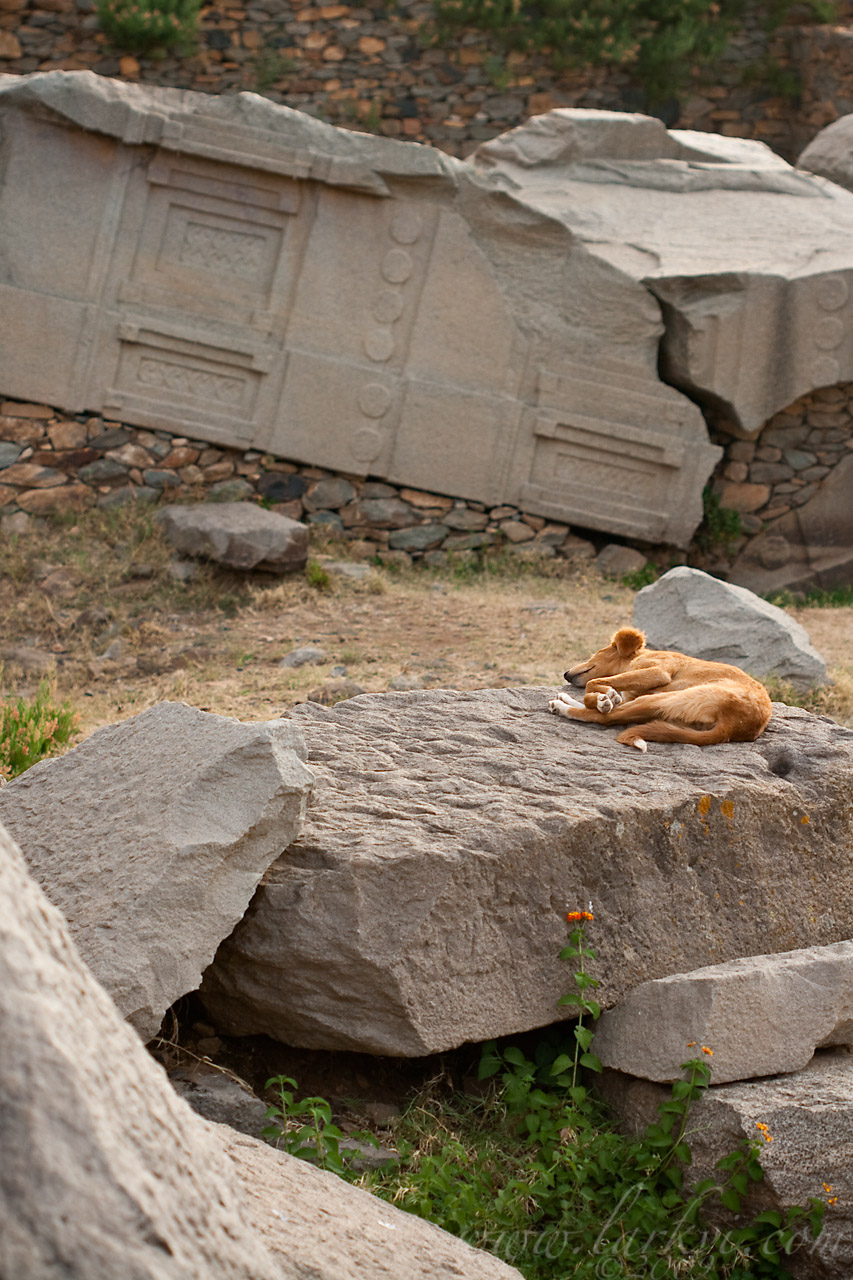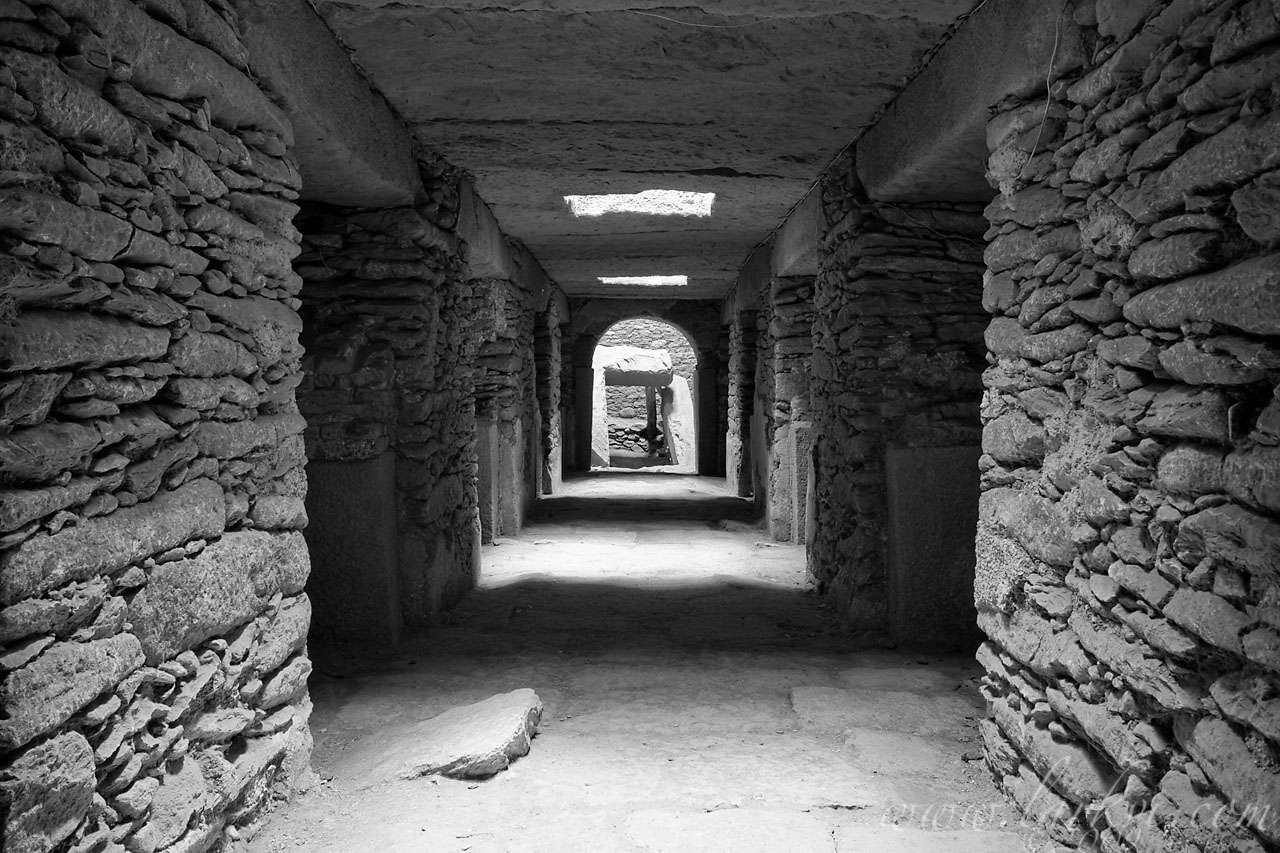The so-called “double stele,” which sources have identified as an incomplete two-topped stela. I somewhat wonder if it is not just the incomplete-quarrying that has led to this identification, but it is interesting to see two stelae quarried immediately adjacent to each other, in any case.
The Beta Gyorgis “House of (St.) George” Quarry is on the hill above Axum, but was significantly less-important than the Gobedra quarry 5km outside of town. The stela(e) show how the quarrying worked–grooves were cut out of the rock before being freed. Stelae were apparently unworked when they were translated into Axum, and carved in place–a sensible way to avoid wasting effort on something that breaks in transit.
I don’t claim any art to this photo–it was taken in middle off a very sunny day, and it shows!


